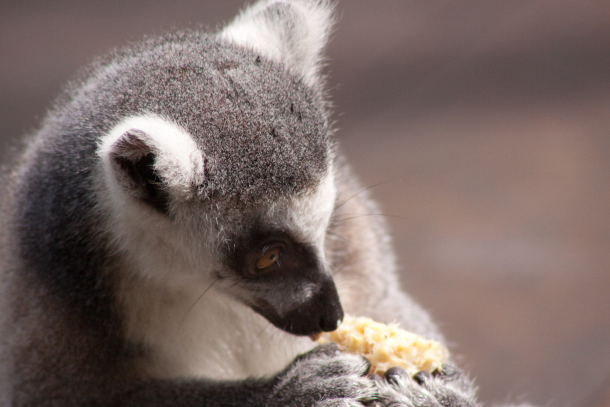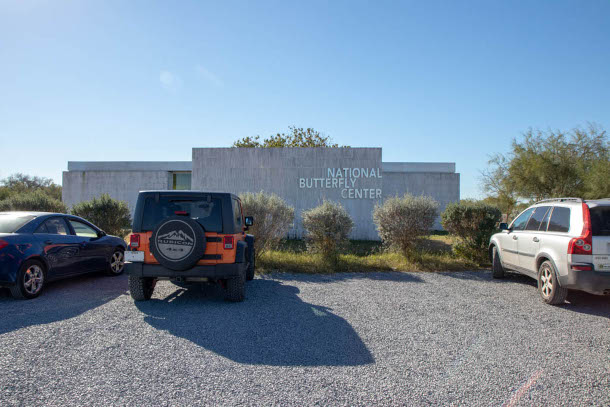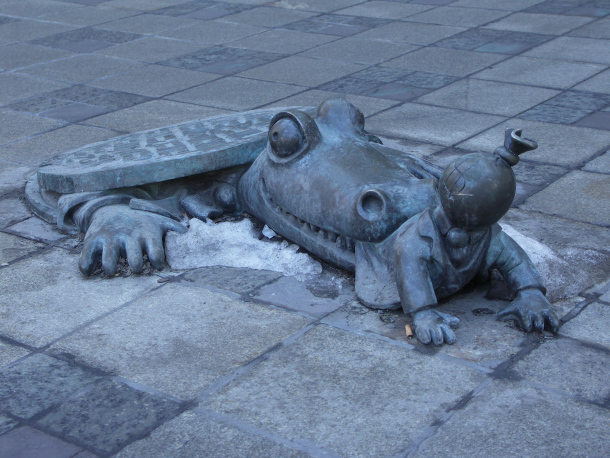Beyond the Headlines
Air Date: Week of February 11, 2022

Lemurs are one of many animals that help plants disperse their seeds throughout their habitat. (Photo: Darren Pearce, Flickr, CC BY-NC 2.0)
Environmental Health News Weekend Editor and columnist Peter Dykstra joins Host Bobby Bascomb for their weekly trip beyond the headlines. First up, the pair discuss the threat to plants who rely on endangered animals to disperse their seeds throughout their habitat. Then, they investigate how Q-Anon forced the National Butterfly Center to close to the public. Finally, the two look through the history books at a famous New York City urban legend.
Transcript
CURWOOD: It’s Living on Earth, I’m Steve Curwood.
BASCOMB: And I’m Bobby Bascomb
Well, it's time for a trip now beyond the headlines with Peter Dykstra. Peter's an editor with Environmental Health News. That's EHN.org and DailyClimate.org. Hey there, Peter, what do you have for us this week?
DYKSTRA: Hi, Bobby. There's an interesting study recently published in the journal Science, about plants that are dependent on birds or other animals to help spread their seeds to keep them alive. And if those birds or other animals are threatened and declining in population, and there's less opportunity to spread their seeds, the plants are then endangered as well.
BASCOMB: You know, it reminds me I did a story years ago in Madagascar, it was about lemurs. You know, when lemurs eat fruit, if the seed passes through a lemur first, it's got something like a 90% germination rate. But if the seeds don't first go through lemur, only about one in a thousand will actually germinate. So the forest, you know, really needs the lemurs to reproduce. And of course, the forest has a habitat for the lemur. So there's this really, really strong relationship there.
DYKSTRA: Always remember your Lemur Fertility Tip of the Day.
BASCOMB: You heard it here first, Peter!
DYKSTRA: Well, there's a big drop off with some species. If you're an animal, you can fly or walk or swim or slither to other areas, and that helps plants to prosper. If in the case of lemurs or other animals, those animals are declining, then plants don't have the benefit of spreading their local range. And it can be a real alarm bell for the health of certain plant species.
BASCOMB: Exactly. Well, what else do you have for us this week?
DYKSTRA: The National Butterfly Center is a private group, a nonprofit down along the Rio Grande near the town of Mission, Texas on the border. They've been forced to close because of QAnon conspiracy theories that say that this Butterfly Center, there for science and nature, is actually a nest of activities, not just for illegal immigration, but for drugs and weapons. And just like the story from the 2016 election, the conspiracy theories say that they're engaged in child sex trafficking.

The National Butterfly Center in Mission, Texas has closed to the public following threats from Q-Anon conspiracy theorists. (Photo: Runarut, Flickr, CC BY 2.0)
BASCOMB: And of course, all of these are just blatant lies. There's nothing of this sort happening in this butterfly reserve.
DYKSTRA: Probably half lies and half hallucinations. All of it is crazy. This came about because of a lawsuit filed by the Butterfly Center. They're two miles from the Rio Grande, but part of the proposed border fence would go straight through their 100 acre property. They went to court to try and stop the construction of the fence. And immediately they were targeted by a wacky political theory.
BASCOMB: Why did it have to close though? I mean, were there threats against their lives, that sort of thing that that really forced them to close at this point?
DYKSTRA: Well, number one, they're closed to the public. Number two, the staff and volunteers are understandably, a little freaked out. They've received threats, including death threats. And if you're in the simple and noble business, of studying nature and educating about nature, that's one of many areas where this kind of lunacy has no place.
BASCOMB: No, certainly not. Well, what do you have for us from the history books this week?
DYKSTRA: Oh, this is one of my favorites, February 10, 1935, published in the New York Times, all the news that's fit to print, there was a story from Upper Manhattan, about an alligator found in the sewers. Some kids were shoveling snow into a storm sewer, they allegedly spotted a seven-foot alligator in the sewer in the middle of a New York winter. Obviously, there are no alligators in anybody's sewers in the north, but it's become an urban legend. Possibly, that's where the name urban legend or urban myth came from.

The sewer alligator urban legend has been memorialized by a permanent art installation from sculptor Tom Otterness at the 14th Street/8th Avenue station in New York City. (Photo: Martin Sutherland, Flickr, CC BY 2.0)
BASCOMB: Yeah, that does sort of seem like the mother of all urban legends. I mean, everybody's heard this story, right? I guess the idea is that somebody brought back an alligator from a vacation, it got too big, got out of hand, so they flushed it down the toilet, ends up in the sewer, and then the story tells itself from there.
DYKSTRA: That's right, the ultimate urban myth. Probably never happened. It certainly didn't produce a seven foot alligator surviving in New York winter. The rest of the story, according to The New York Times, is that the alligator was not seen again, after it was captured, brought up and then incinerated in a municipal incinerator.
BASCOMB: What? Okay. I never heard that part of the story. And frankly, I didn't know that it had been published in the New York Times. That adds credibility to this, this kind of outlandish tale.
DYKSTRA: All of the urban myths that are fit to print.
BASCOMB: Alright, well, Thanks, Peter. Peter Dykstra is an editor with Environmental Health News. That's EHN.org and DailyClimate.org. We'll talk to you again real soon.
DYKSTRA: Okay, Bobby, thanks a lot. Talk to you soon.
BASCOMB: And there's more on these stories on the Living on Earth website that's LOE.org.
Links
The Revelator | “Plants Face Tough Climate Challenges as Seed-Dispersing Animals Decline”
Find out more about the origin of the “Sewer Gator” urban legend
Living on Earth wants to hear from you!
Living on Earth
62 Calef Highway, Suite 212
Lee, NH 03861
Telephone: 617-287-4121
E-mail: comments@loe.org
Newsletter [Click here]
Donate to Living on Earth!
Living on Earth is an independent media program and relies entirely on contributions from listeners and institutions supporting public service. Please donate now to preserve an independent environmental voice.
NewsletterLiving on Earth offers a weekly delivery of the show's rundown to your mailbox. Sign up for our newsletter today!
 Sailors For The Sea: Be the change you want to sea.
Sailors For The Sea: Be the change you want to sea.
 The Grantham Foundation for the Protection of the Environment: Committed to protecting and improving the health of the global environment.
The Grantham Foundation for the Protection of the Environment: Committed to protecting and improving the health of the global environment.
 Contribute to Living on Earth and receive, as our gift to you, an archival print of one of Mark Seth Lender's extraordinary wildlife photographs. Follow the link to see Mark's current collection of photographs.
Contribute to Living on Earth and receive, as our gift to you, an archival print of one of Mark Seth Lender's extraordinary wildlife photographs. Follow the link to see Mark's current collection of photographs.
 Buy a signed copy of Mark Seth Lender's book Smeagull the Seagull & support Living on Earth
Buy a signed copy of Mark Seth Lender's book Smeagull the Seagull & support Living on Earth

